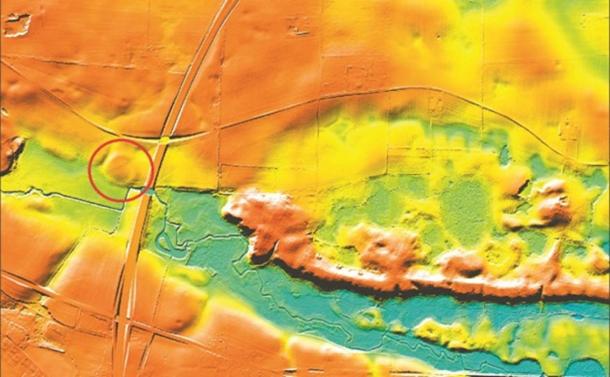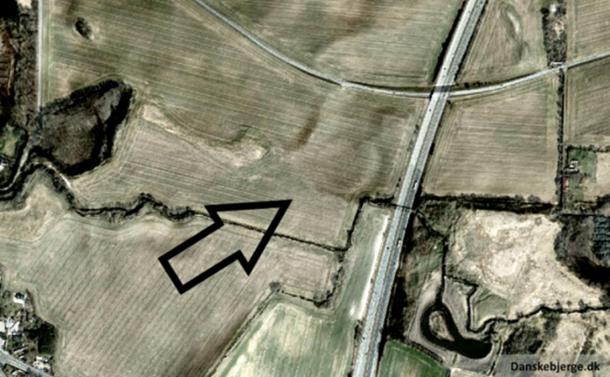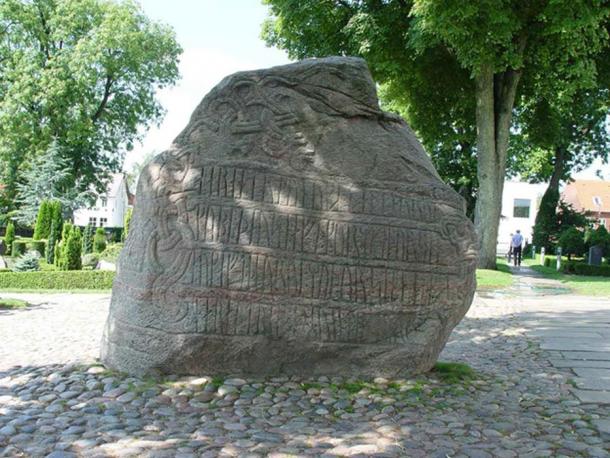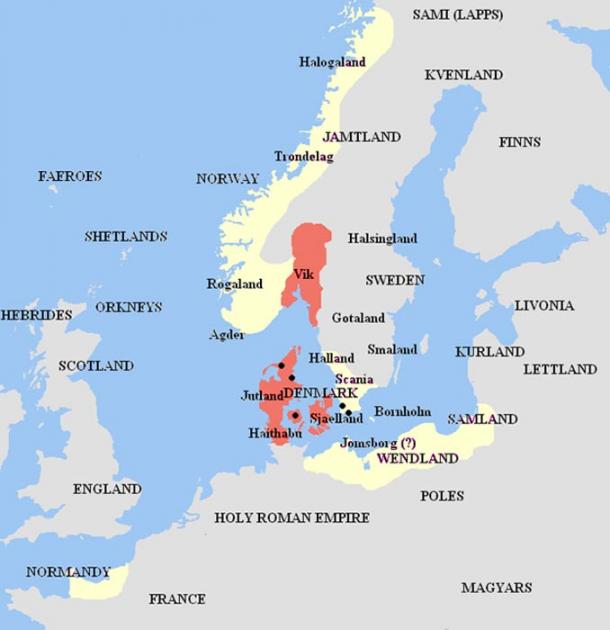Archaeologists say they have found clear evidence that someone set fire to the Viking castle Vallø Borgring near Køge not far from Copenhagen. They are hoping to shed more light on the cold case with modern fire-investigation techniques. According to an article in the CPHPost.dk, the arsonists set fires at the northern and eastern gates of the castle, which was constructed in a ring.

Drone operators discovered the fortress (circled in red) in 2014. (photo: Museum Sydøstdanmark)
Jens Ulriksen, head of the excavations at the fortress, told DR Nyheder: “All indications are that there has been a fire set at the gates of the castle. The outer posts of the east gate are completely charred, and there are signs of burning on the inside.”Researchers say the half-constructed castle may have belonged to King Harald Bluetooth, who reigned in the late 900s. Historical documents state that the king drove his army too hard, so his men retaliated in a riot during which he was killed.
“Our theory right now is that other powerful men in the country attacked the castle and set fire to the gates,” Ulriksen is quoted as saying.

Another view of the landscape and the ring fortress without infrared (Photo: Danskebjerge)
It was possibly the last structure built by Bluetooth, researchers say, because construction on it was only half done when it burned.The researchers intend to ask the fire investigator to bring in dogs to sniff out human remains in the earth and possibly to help uncover other evidence of arson.
“Borgring” means ring fortress. It was built as a 10- to 11-meter-wide (32.8 to 36 feet) stockade with pointed wooden poles, excavations have shown. The fortress is 145 meters (475.7 feet) in diameter and visible from the air (see photo above and at the top of the article).
Five other Viking ring fortresses have been found in Denmark, possibly all built on the command of one person, but when this castle was discovered in 2014, it was the first in 60 years.
“The four other circular fortresses have been dated to the reign of Harald Bluetooth in the late 900s. The construction of this fortress is very similar to the one found in Hobro, and thus it is likely that Harald Bluetooth was the builder too, the Danish Castle Centre believes,” says CPHPost.dk in another article.

A runestone with an inscription to Harald Bluetooth (Wikimedia Commons/Jürgen Howaldt)
“Although, there were Vikings in other countries, these circular fortresses are unique to Denmark. Many have given up hope that there were many of them left,” Viking age scholar Lasse C.A. Sonne said in 2014.Carbon dating has confirmed the castle near Køge dates to around the time of Bluetooth. He reigned from around 958 to his death in 985, possibly at the hands of his son Sweyn Forkbeard. Harald was the son of Gorm the Old and Thyra Dannebod, founders of a new line of royalty who ruled from northern Jutland, the Danish peninsula that juts into the North Sea toward Sweden and Norway.

Harald's kingdom in red and his vassals and allies in yellow, as described in medieval Scandinavian sources (Wikimedia Commons/Bryangotts)
Harald continued the unification of Denmark begun by Gorm. He also was one of the principal figures in the conversion of the Danes to Christianity. Around 970 he conquered Norway. His descendants would rule England for a time.His name was used in the Bluetooth standard that connects electronic devices without wires.
Top image: Photo from a modern-day Viking fire festival (Photo: warosu.org)
By Mark Miller

No comments:
Post a Comment